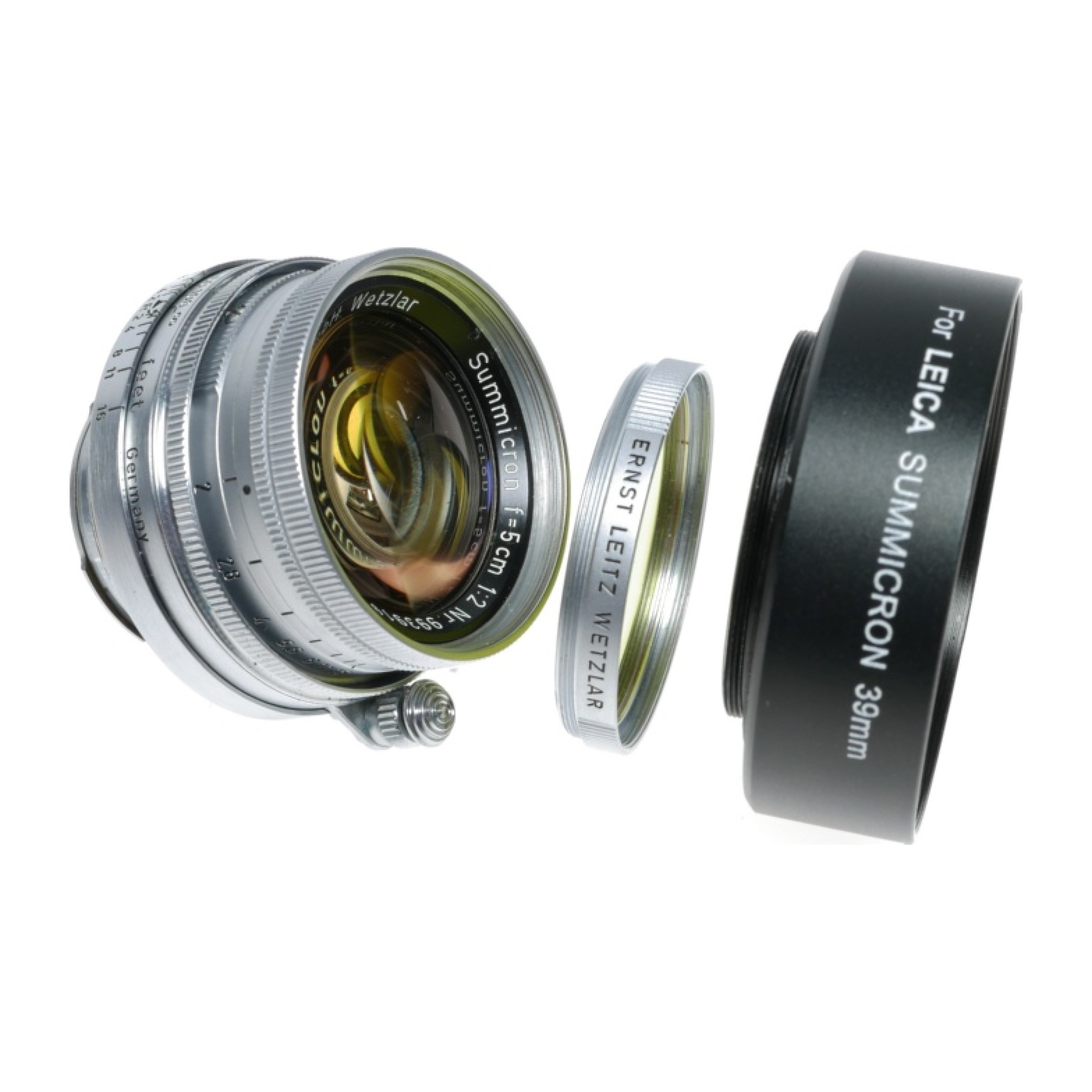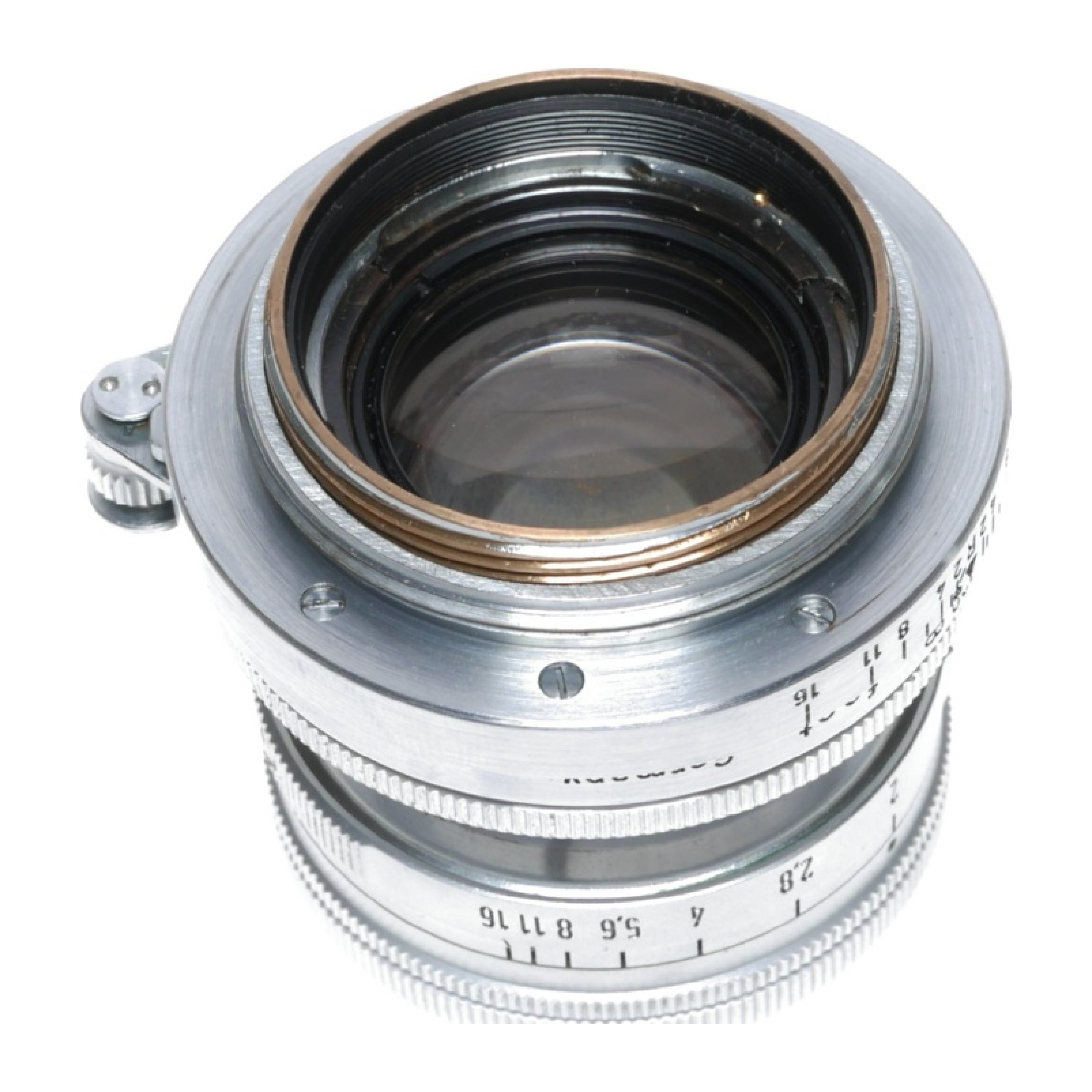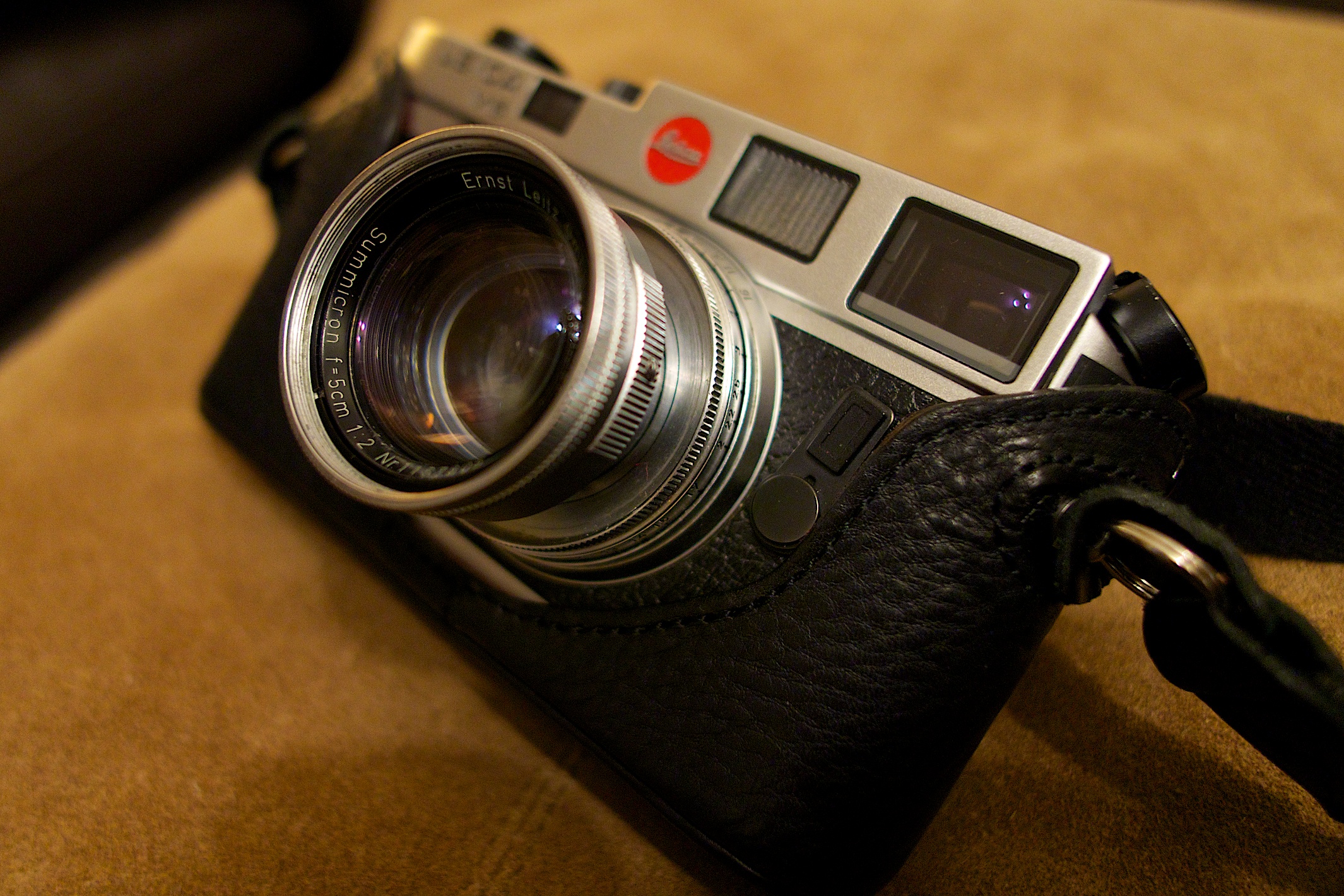

Although significantly faster at f/1.4 or f/1.5, the Sonnars were complicated, expensive to produce, and demonstrated certain idiosyncrasies such as significant focus shift at the lens aperture was stopped down.

The Tessar was the simplest and cheapest design, typically being a slower f/3.5 lens. The 1950s witnessed three basic types of rangefinder lens designs for 50mm lenses: the Tessar, the Sonnar, and the Double-Gauss, all of which were developed by German companies before or during the War. By 1960, Konica’s camera division was focusing almost exclusively on developing a competitive 35mm SLR and the next generation of fixed-lens rangefinders. It is not quite clear how long the M39 Hexanon was produced.


As with most quality 1950s M39 lenses, they sure don’t make them like they used to. The 50mm f/1.9 Hexanon is a beautifully-crafted and relatively compact lens with a chrome barrel, click-stops for aperture, Konica’s trademark 1950s amber-colored single lens coating, and the standard-for-the-era infinity lock. Although for a long time relatively unknown in Western markets, some Japan-based retailers began selling more than a decade ago examples of the M39 f/1.9 Hexanons on popular auctions sites, sometimes as standalone lenses and sometimes bundled with their original cameras. Although no extant lens diagrams exist for the Konica II and III, many erudite folks are fairly sure that their fixed 48mm f/2 and 50mm f/1.8 lenses are pretty much the same as the 50mm f/1.9. The f/3.5 and f/1.9 lenses came normally bundled with several mid-1950s Japanese-market M39 cameras like the Chiyotax IIIF and Leotax models like the “F” and the “T.” However, because mid-1950s Chiyotaxes and Leotaxes did not largely make it to North America before both manufacturers switched to different bundled lenses later in the 1950s, the standalone M39 f/3.5 and f/1.9 Hexanons have remained largely unknown in English-language literature. Of these three, only the incredibly-expensive 60mm f/1.2 appears to have been marketed and sold directly by Konica. During this era, Konica also produced in some number three Leica screw mount (M39) lenses: a collapsible 50mm f/3.5, a rigid 50mm f/1.9, and a super-fast 60mm f/1.2. During the 1950s, Konishiroku Corporation (Konica) gained a deserved reputation for producing high-quality fixed-lens 35mm rangefinder cameras, most notably the I, II, and III series.


 0 kommentar(er)
0 kommentar(er)
